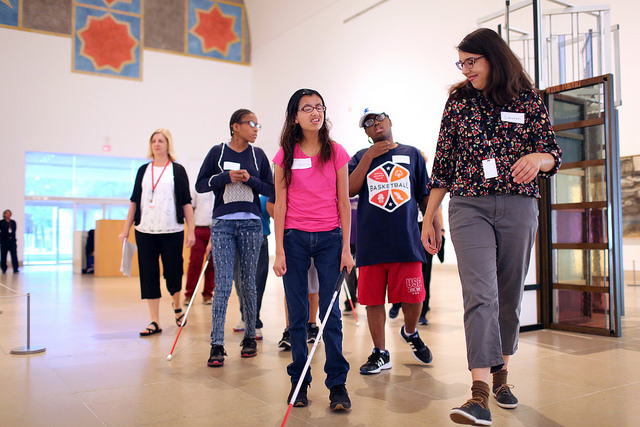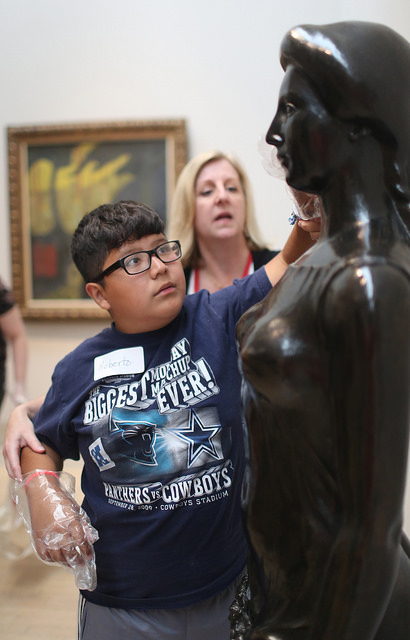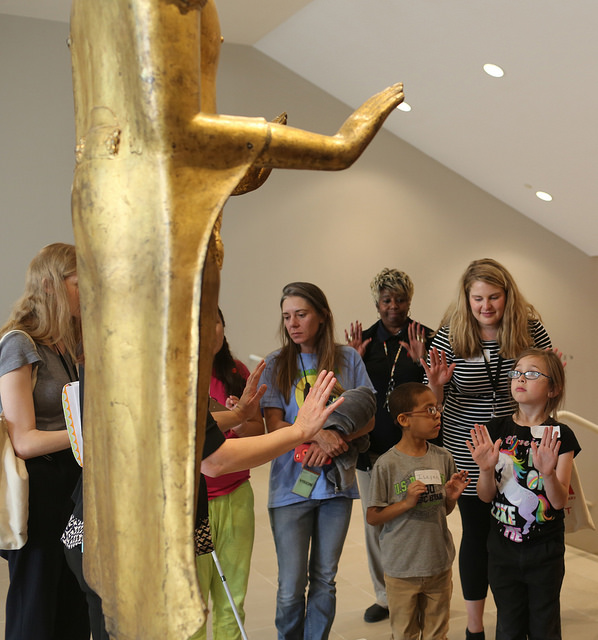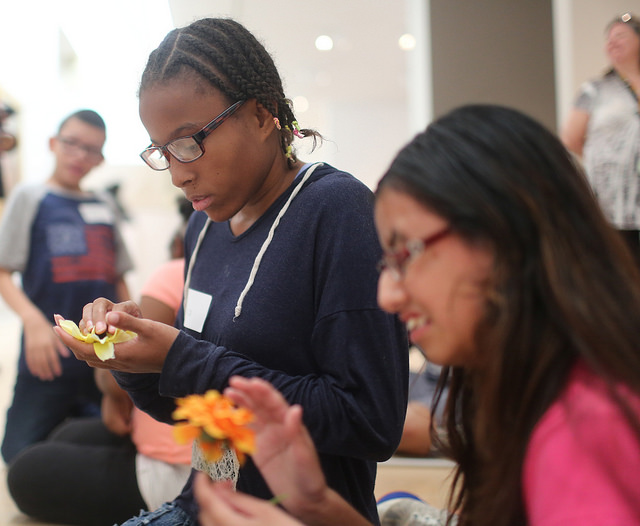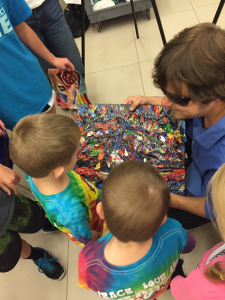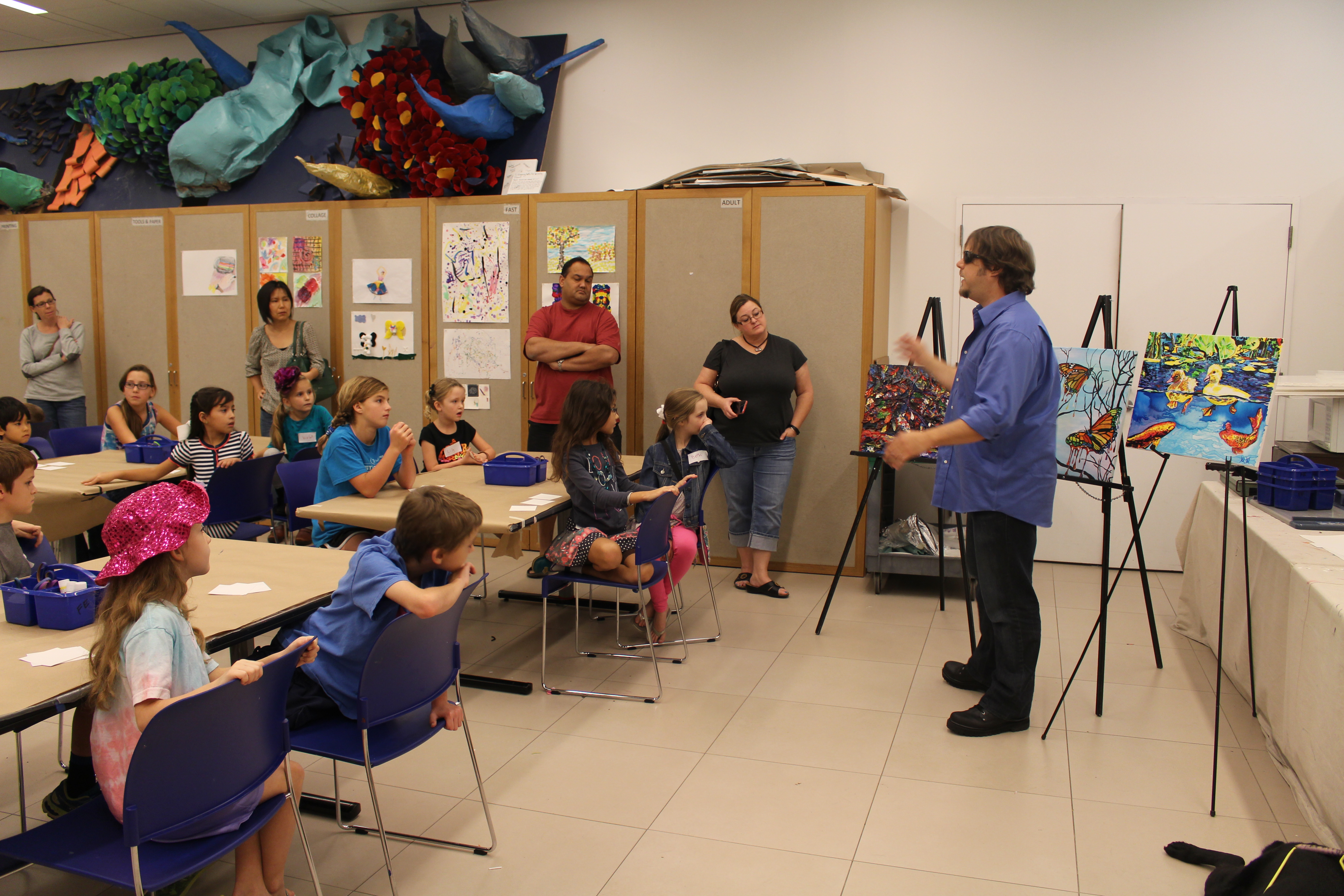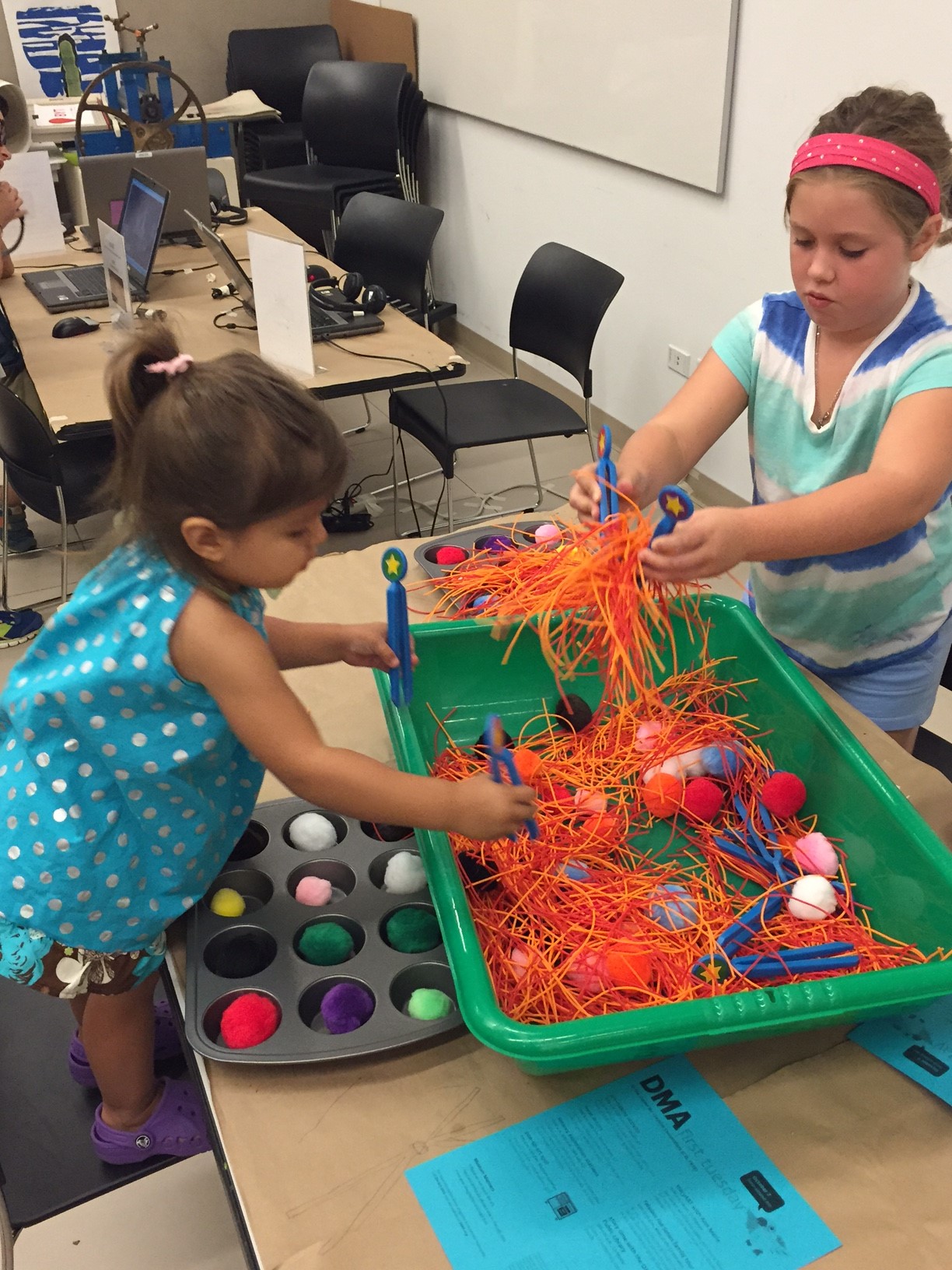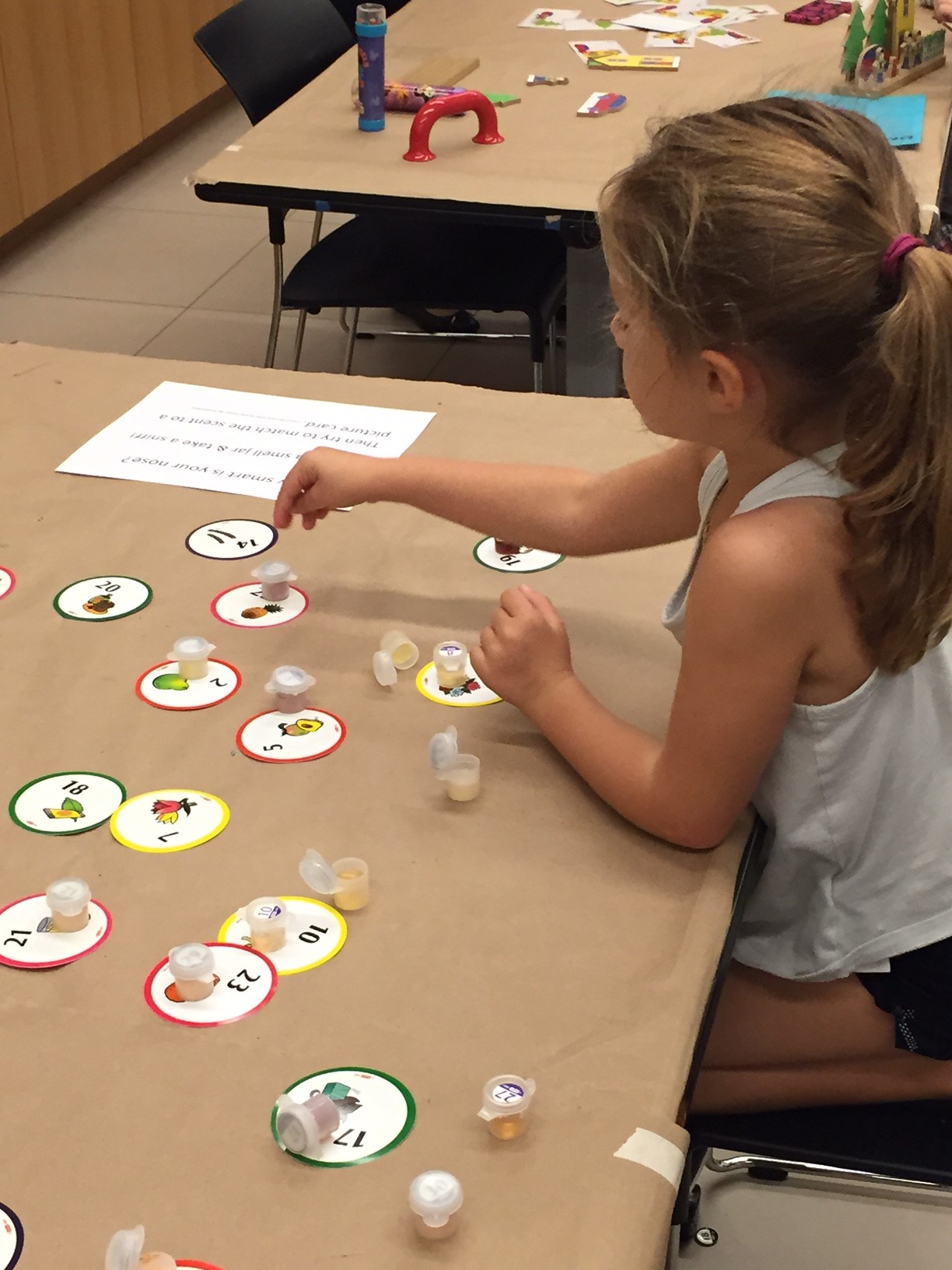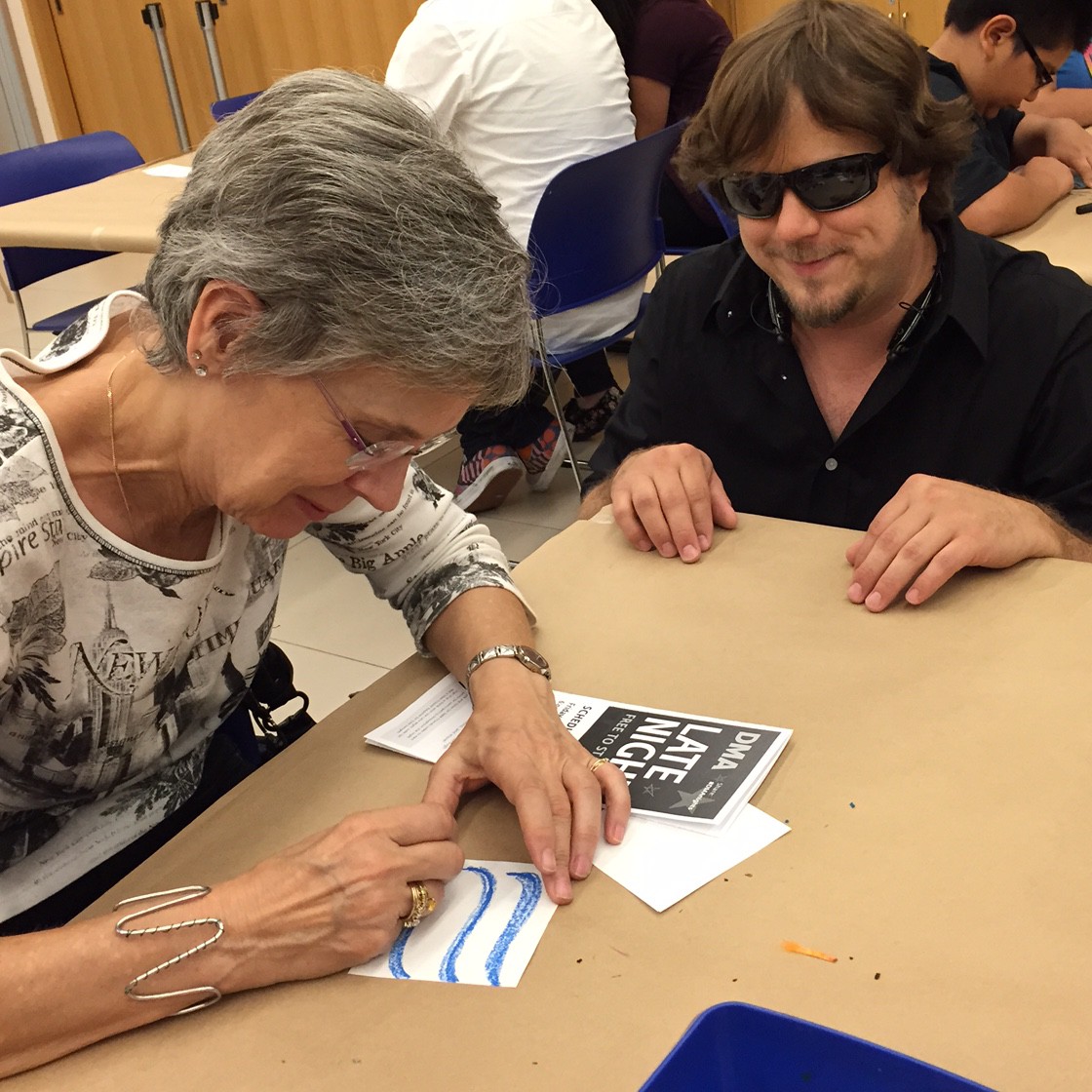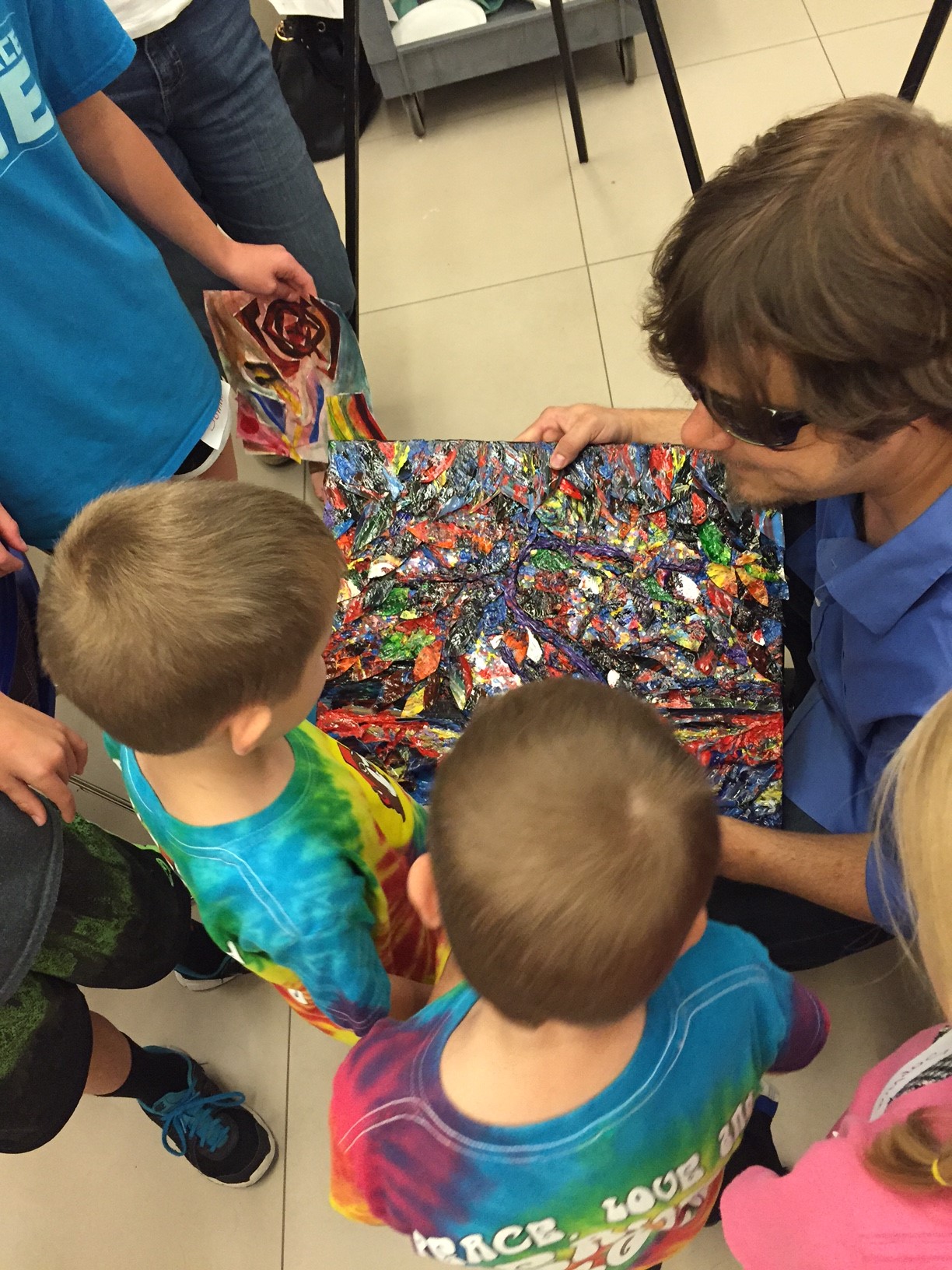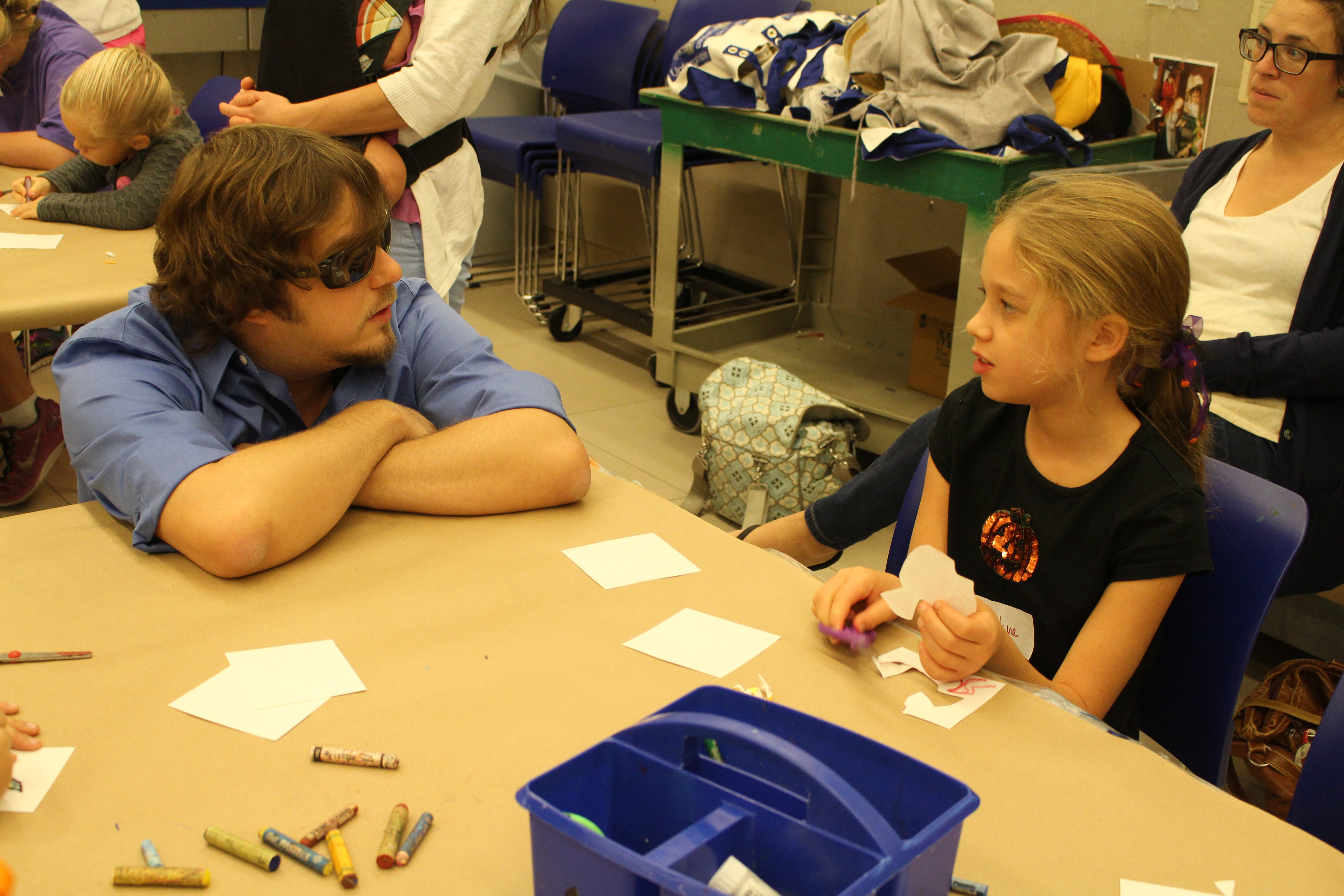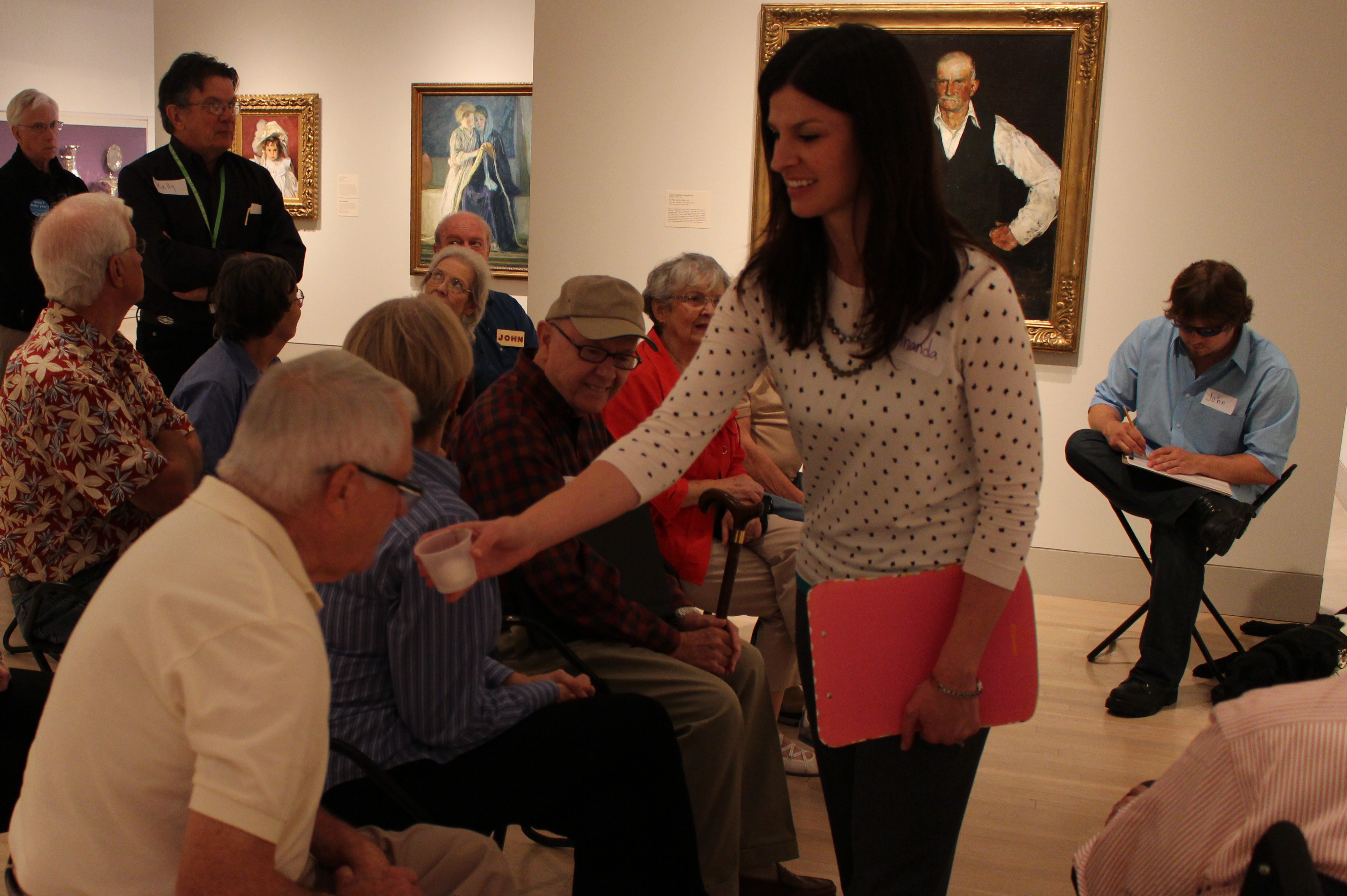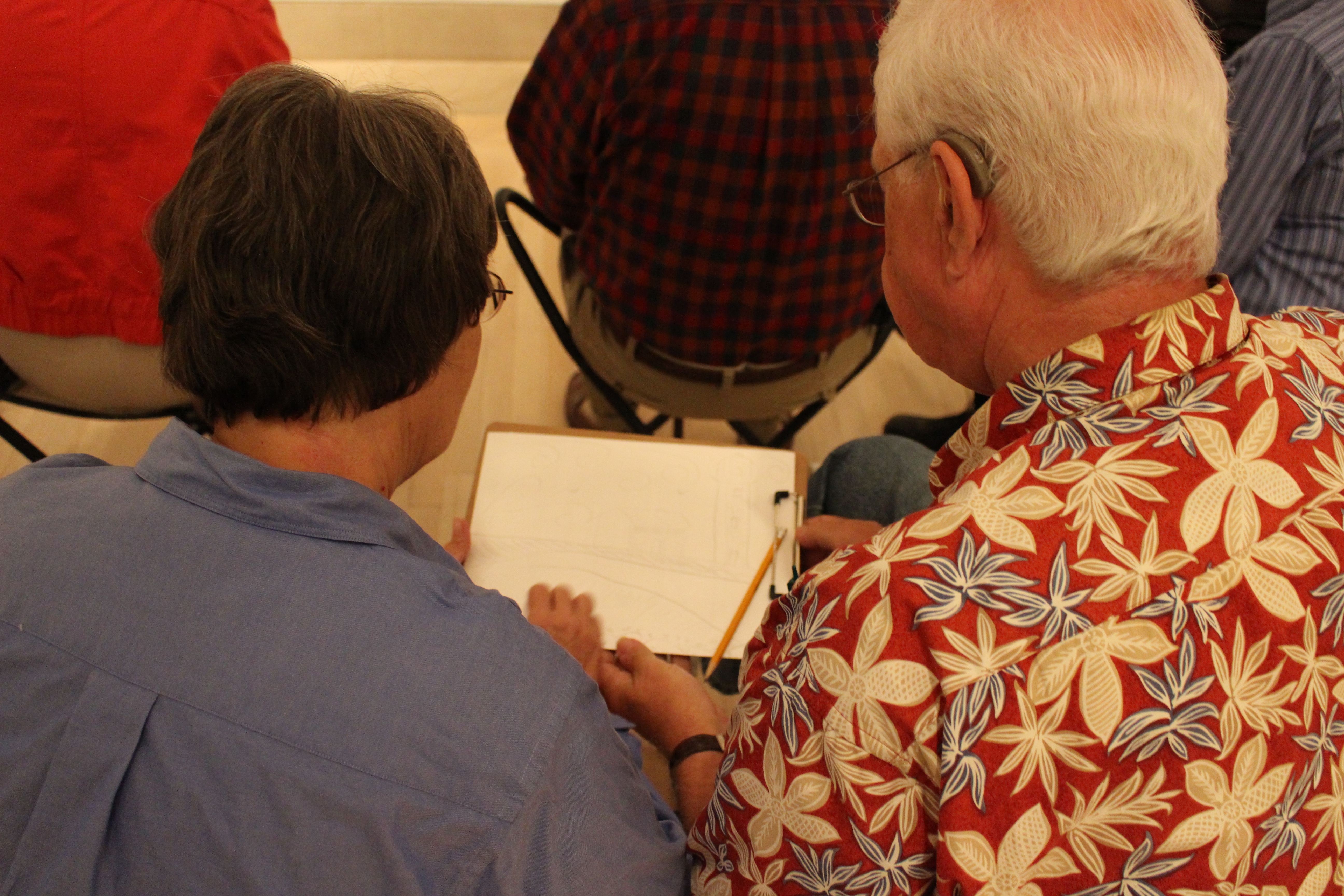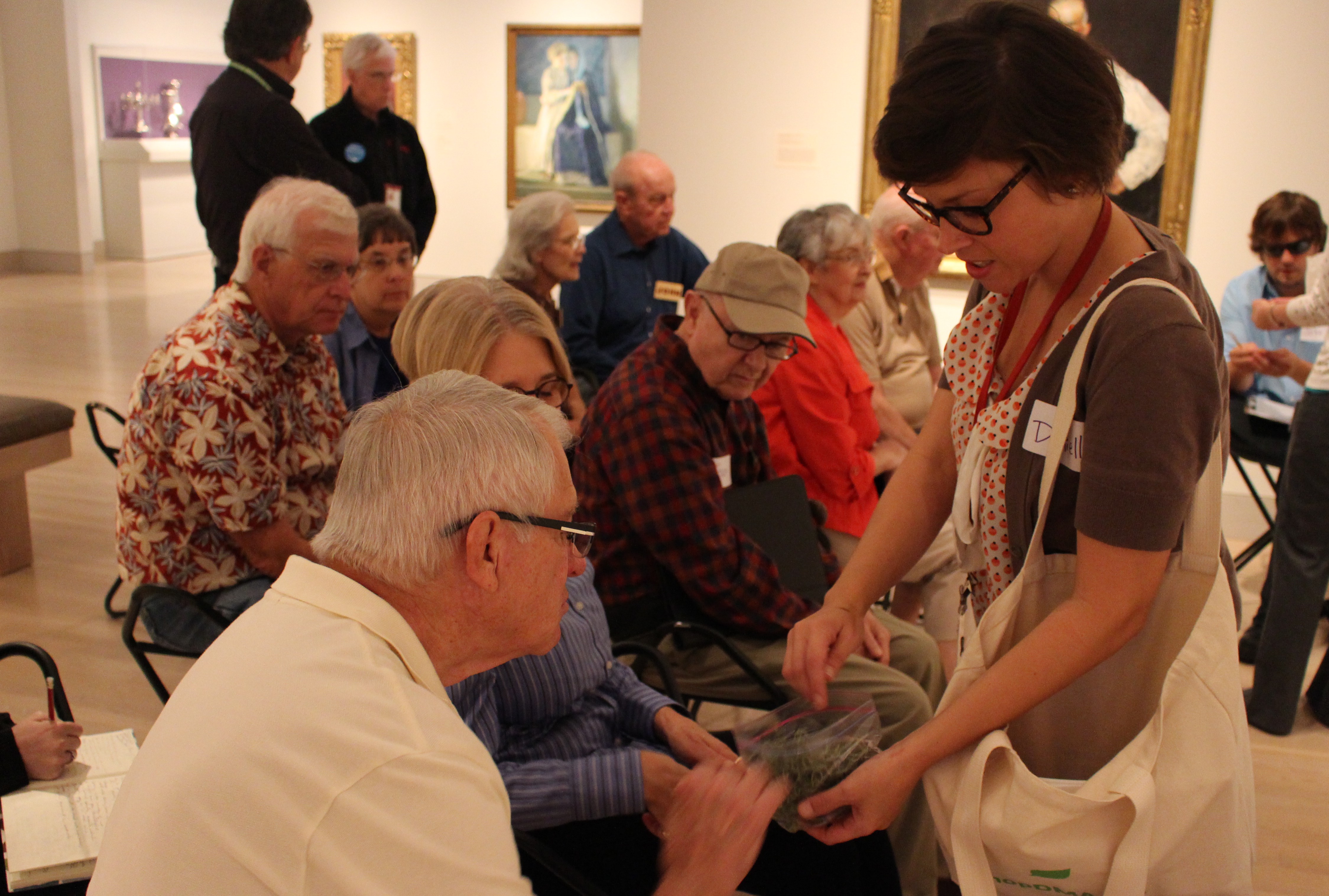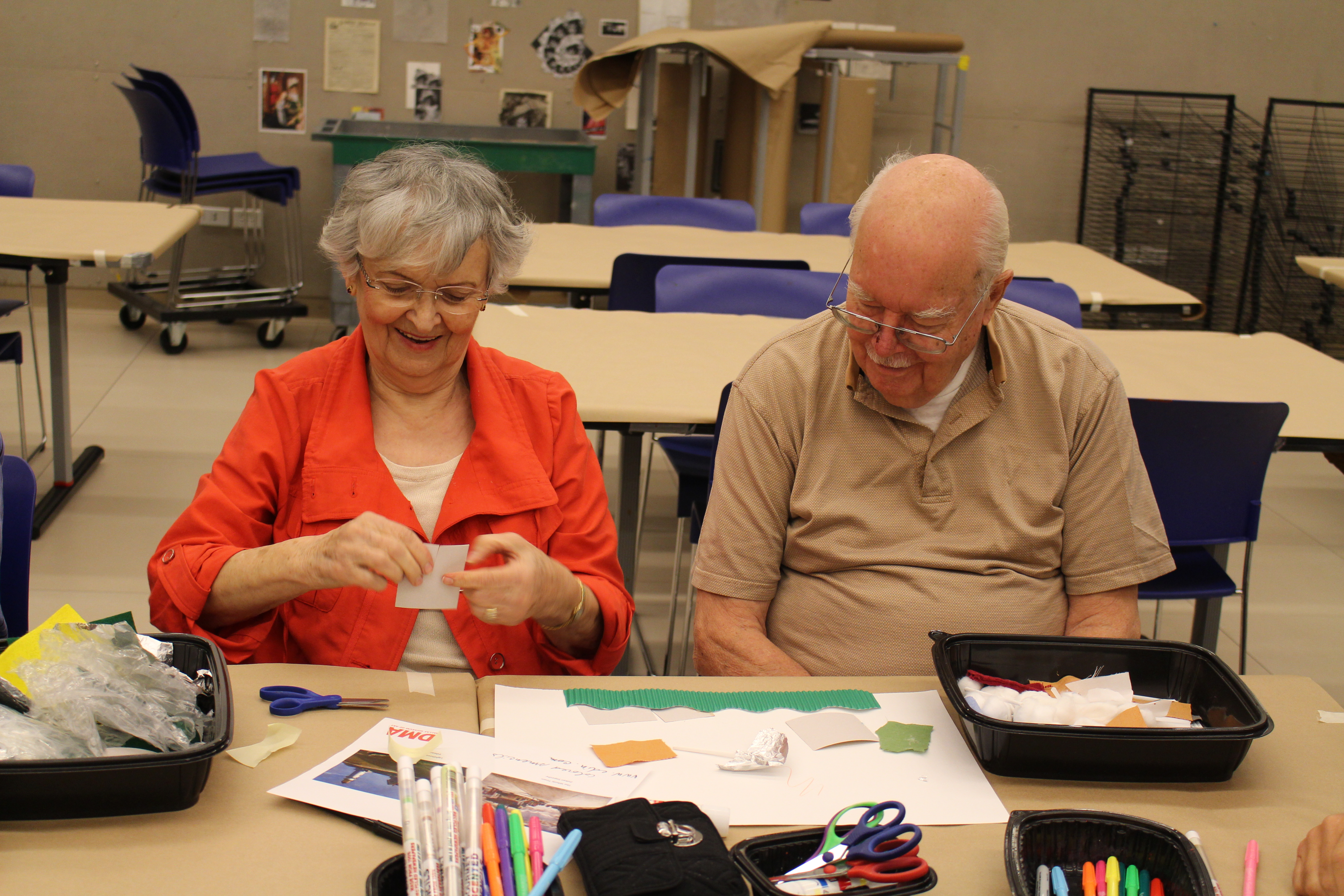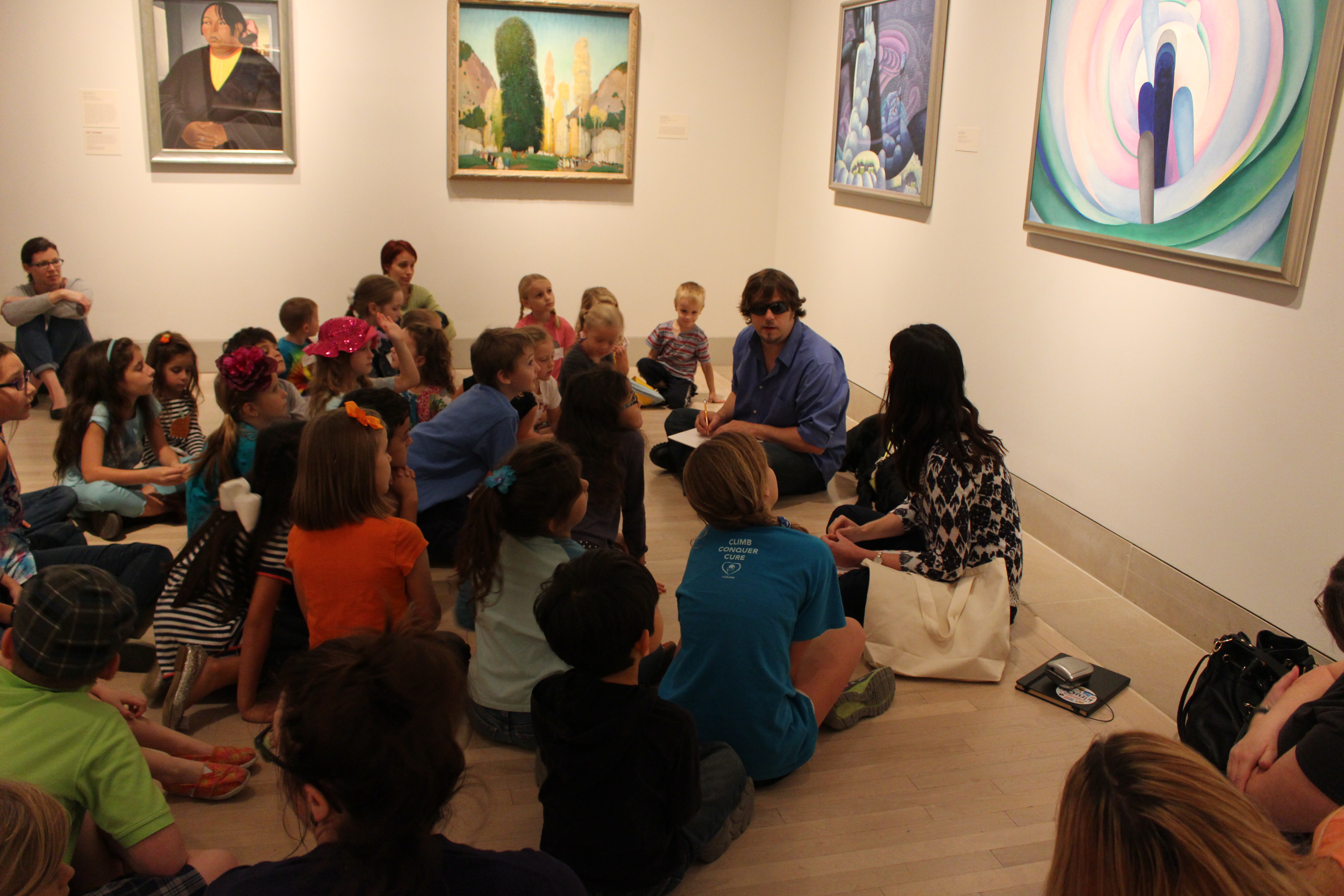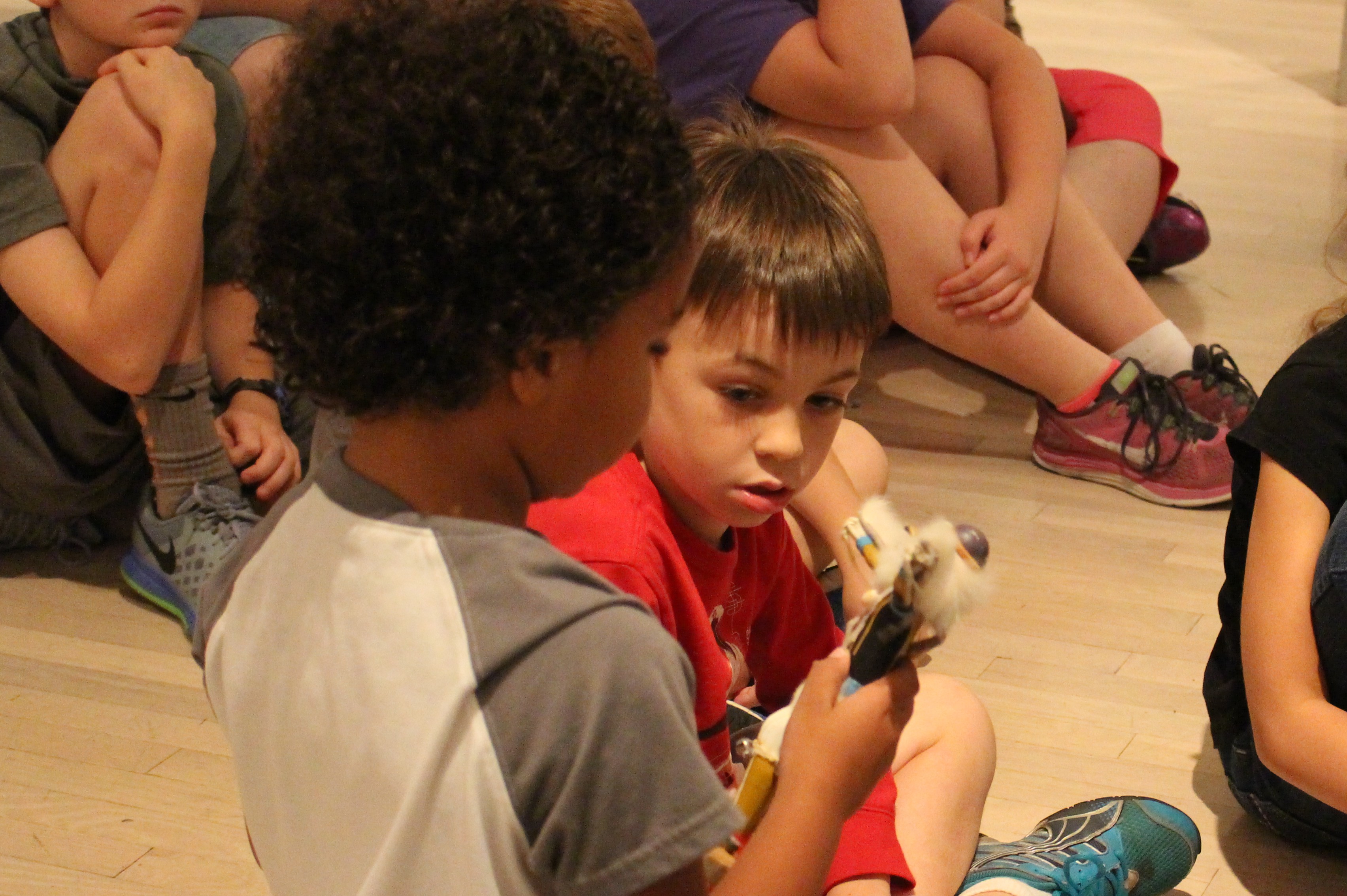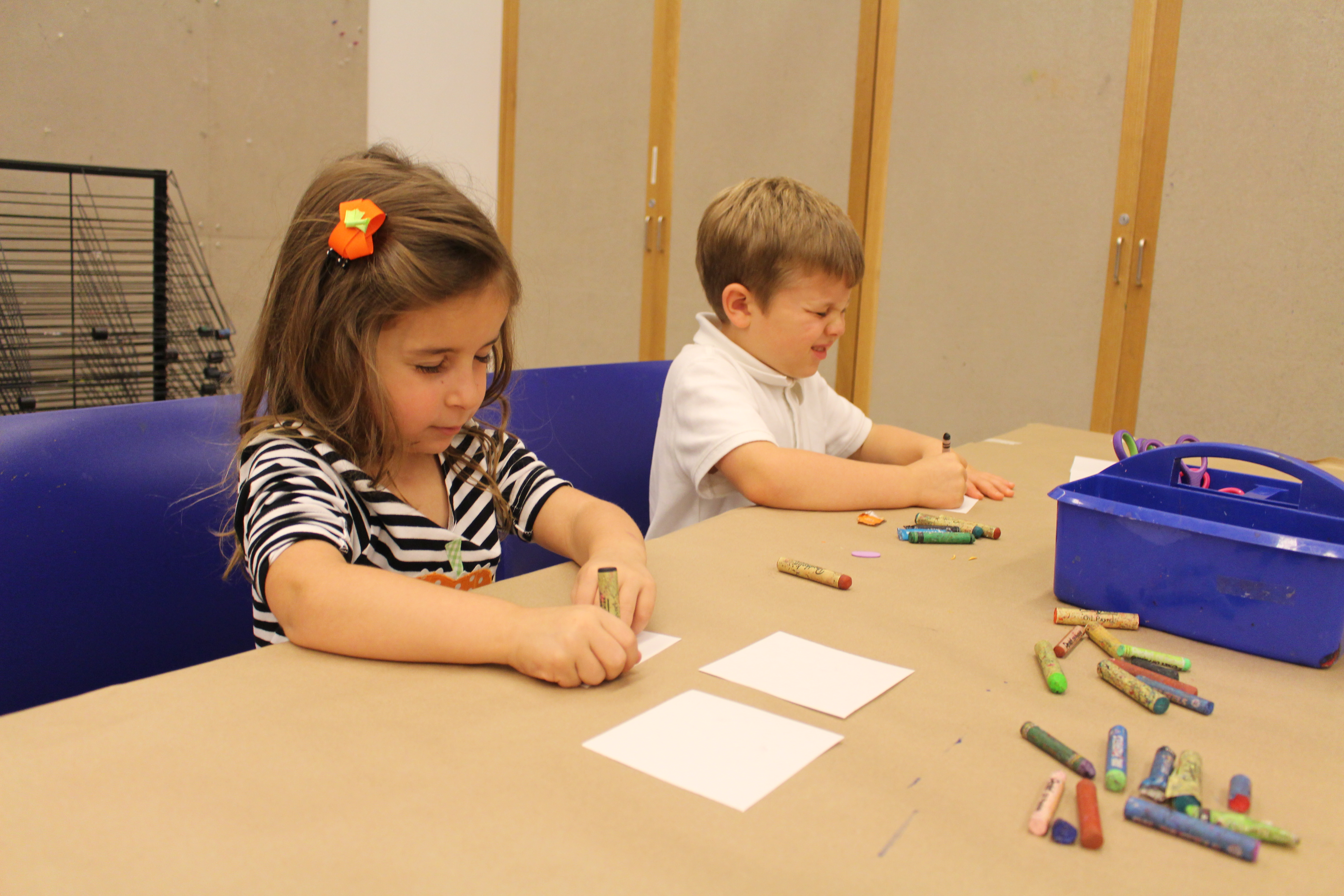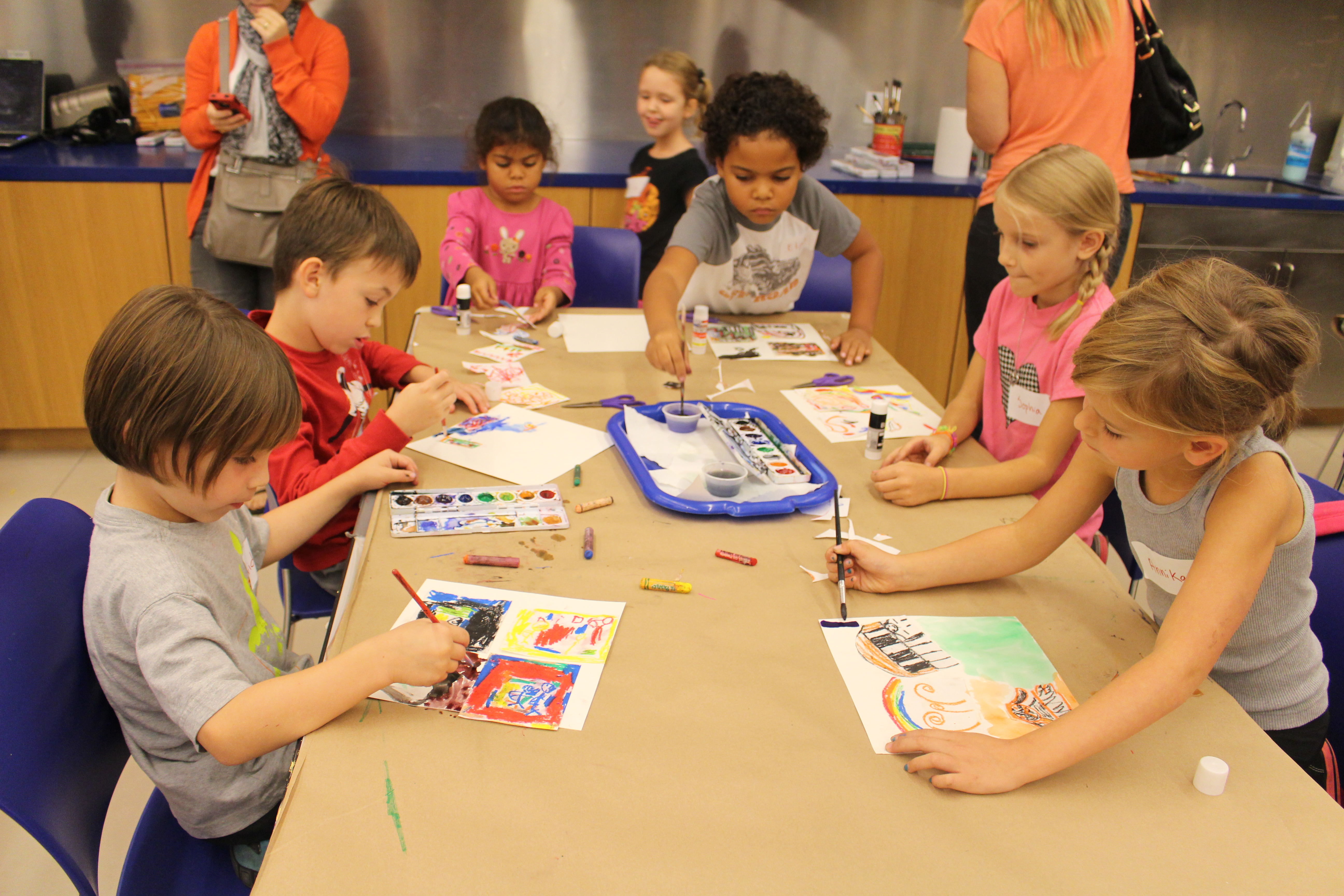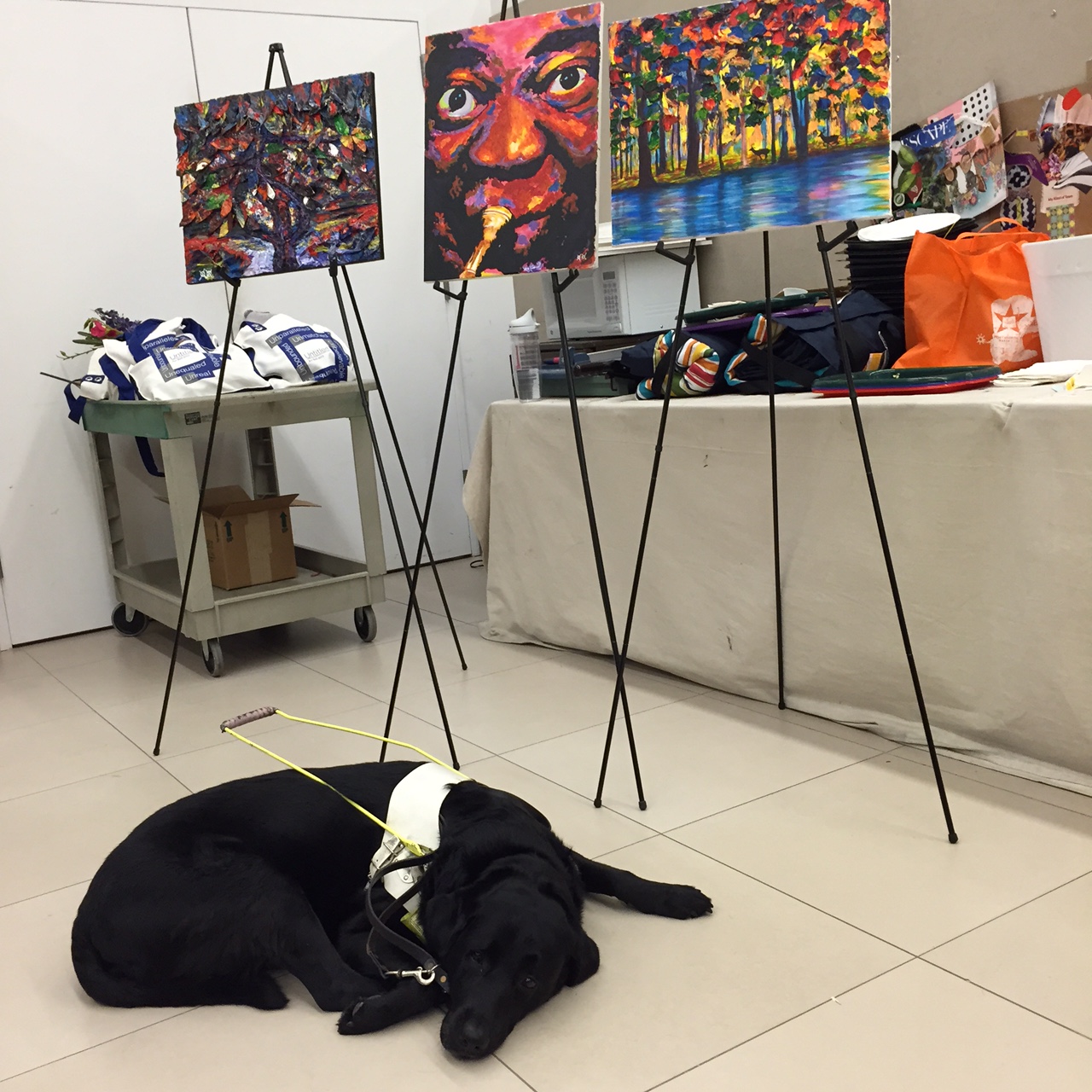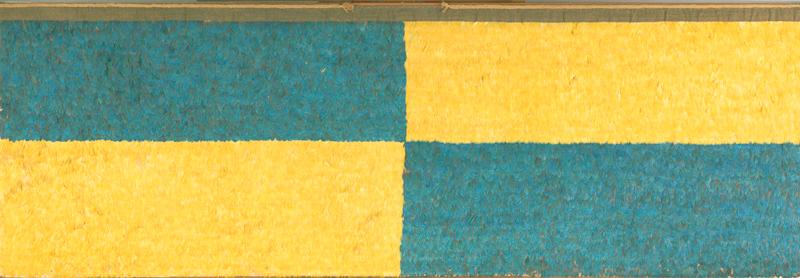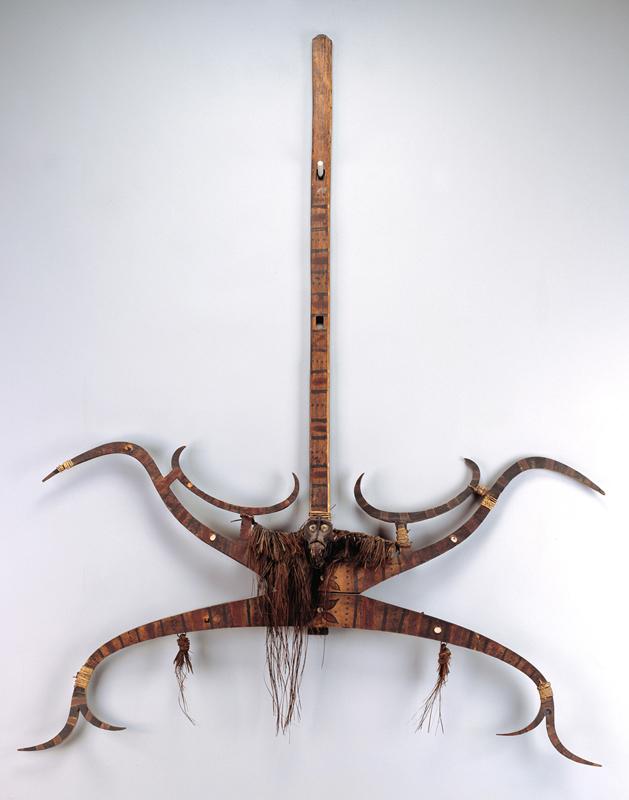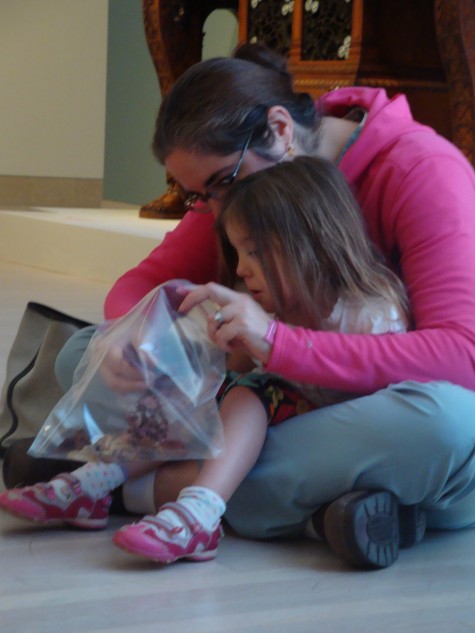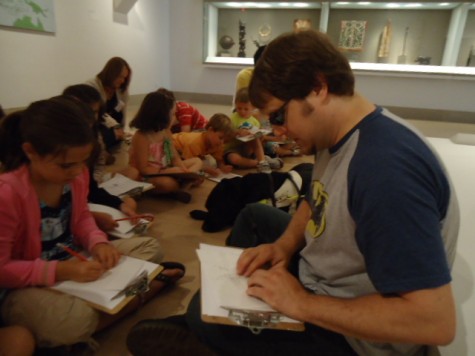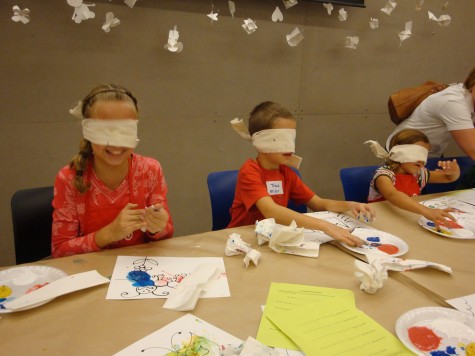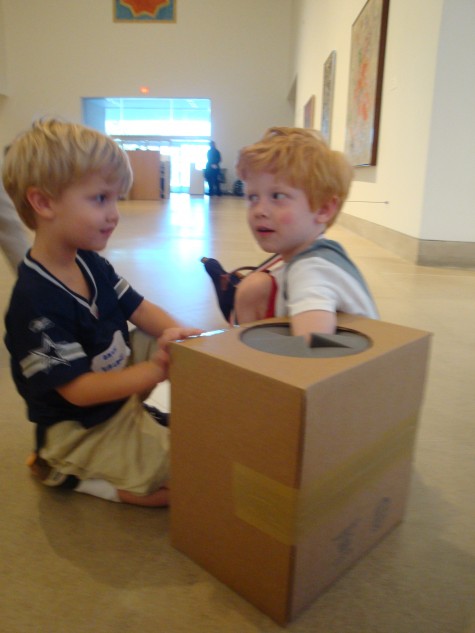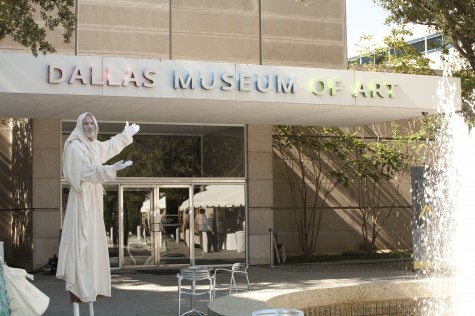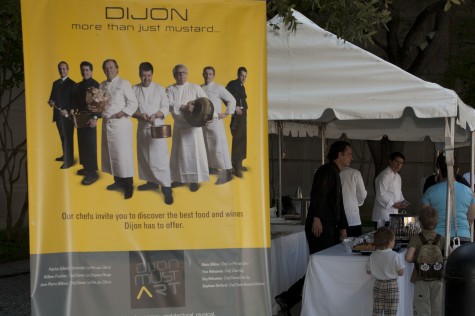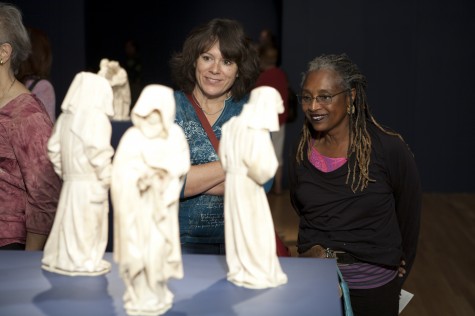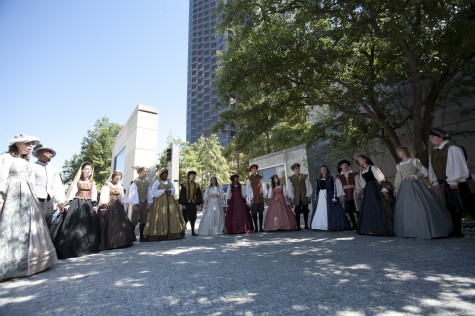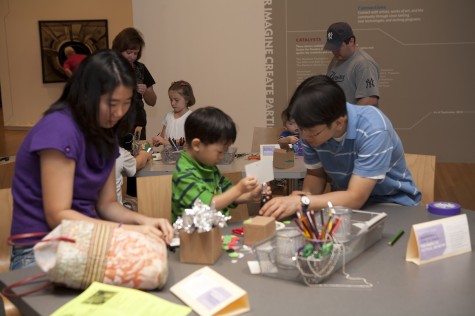The DMA, as well as other museums and cultural institutions across the country, have been tackling this question in the hopes of creating environments that are safe, open, and comfortable for a wide variety of people. Primarily, accessibility is thought of as a physical construct: a museum is deemed accessible if it holds no physical barriers to entry. Ramps, elevators and similar architectural structures are essential components for accessibility, providing individuals with and without mobility issues easy entry into any type of building. Removing physical boundaries is a key first step towards addressing the accessibility question.
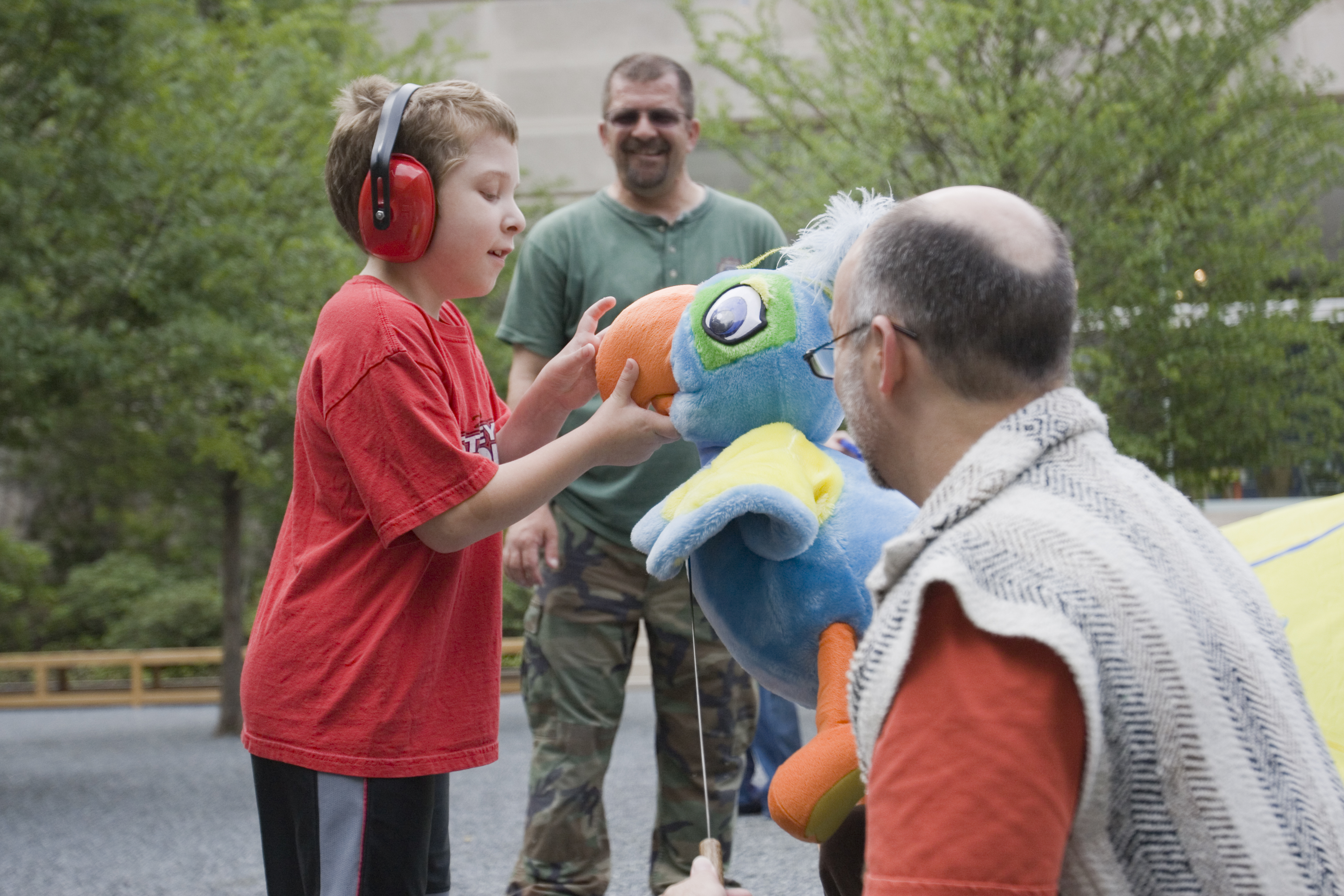
A family participating in an Autism Awareness Family Celebration at the DMA
But then what? How does accessibility extend inside museum walls? Museums strive to ensure that their collections, programs, and services are accessible to all audiences, often by providing diverse educational programs that cater to visitors of varying abilities. When we think about teaching at the DMA, we think about inclusive experiences that are open to everyone, regardless of a person’s ability. While making learning experiences at the DMA open and accessible to all is important, we also believe that designing individualized experiences for a range of needs is important too. And we hope these special programs raise the awareness that art is for everyone, though some visitors may need to work in different ways to see and enjoy it.
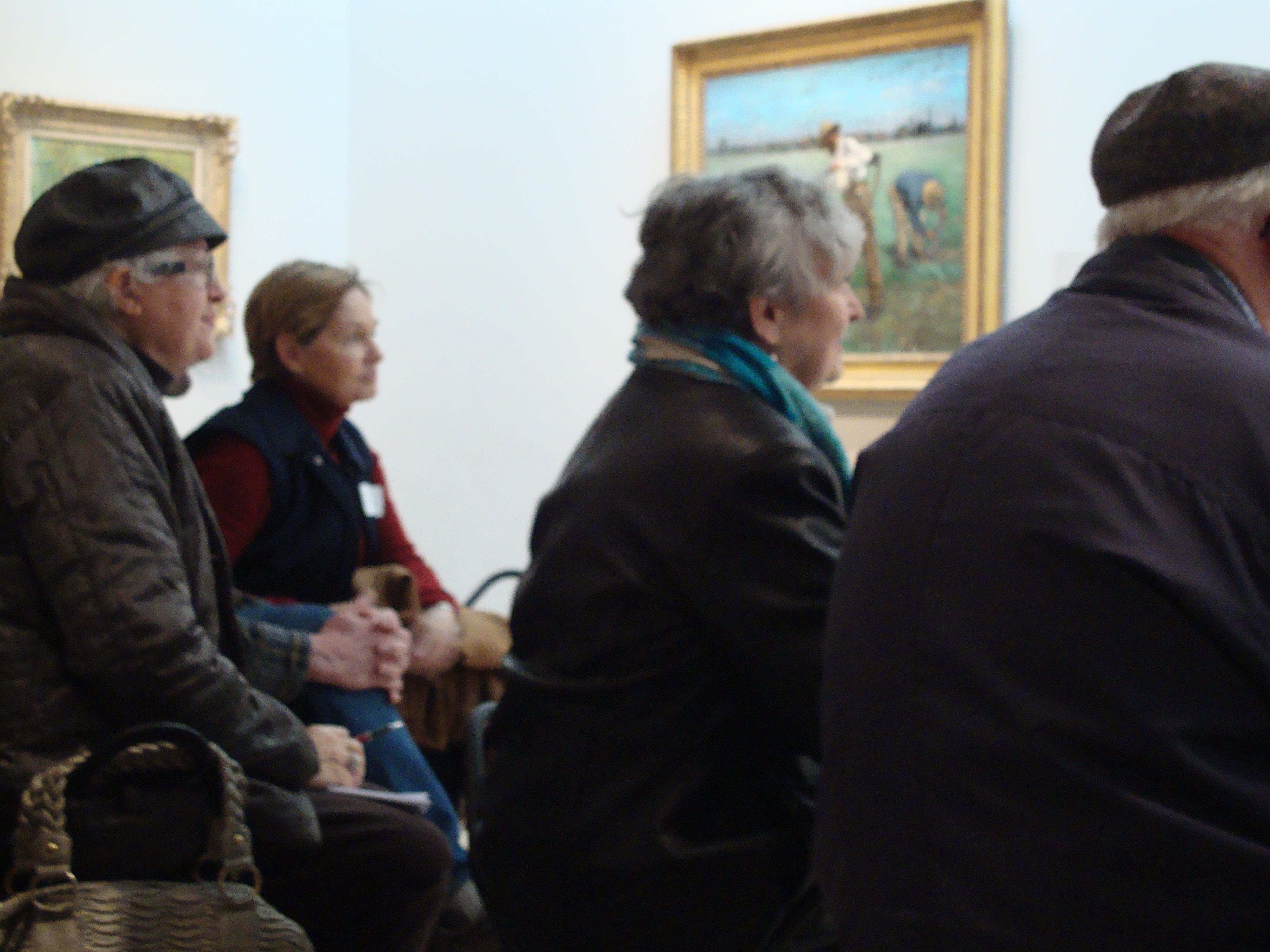
Meaningful Moments participants in the gallery
Our Access Programs provide these individualized experiences for visitors with special needs. Interactive gallery experiences and hands-on art making opportunities are available for adults with developmental disabilities as part of our partnership with The Arc of Dallas, as well as for adults with dementia and their care partners during our Meaningful Moments monthly program. For families and visitors with autism spectrum disorders, we organize a specialized summer art camp for children as well as Autism Awareness Family Celebrations throughout the year. These multi-sensory programs and events involve tactile opportunities and art-making activities that enable visitors of varying abilities to discover and appreciate artists and their works of art. During the month of October, we participate in Art Beyond Sight Awareness Month and focus on helping visitors enjoy art using senses beyond eyesight.
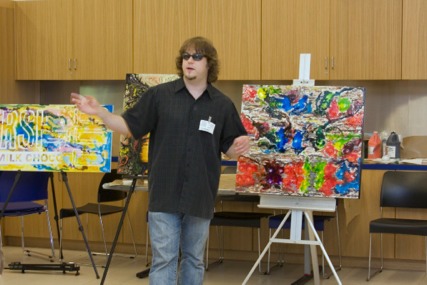
Artist John Bramblitt talking about his works of art to summer campers
The DMA is an Art Beyond Sight Partner and is proud to have participated in programming for Art Beyond Sight Awareness Month each October since 2007. Composed of leading institutions in 35 states and 25 countries, Art Beyond Sight Awareness Month is an outreach effort dedicated to promoting art education for people with vision impairment and building an inclusive society with improved access for all. This year, we were excited to expand our offerings to include programs for adults.
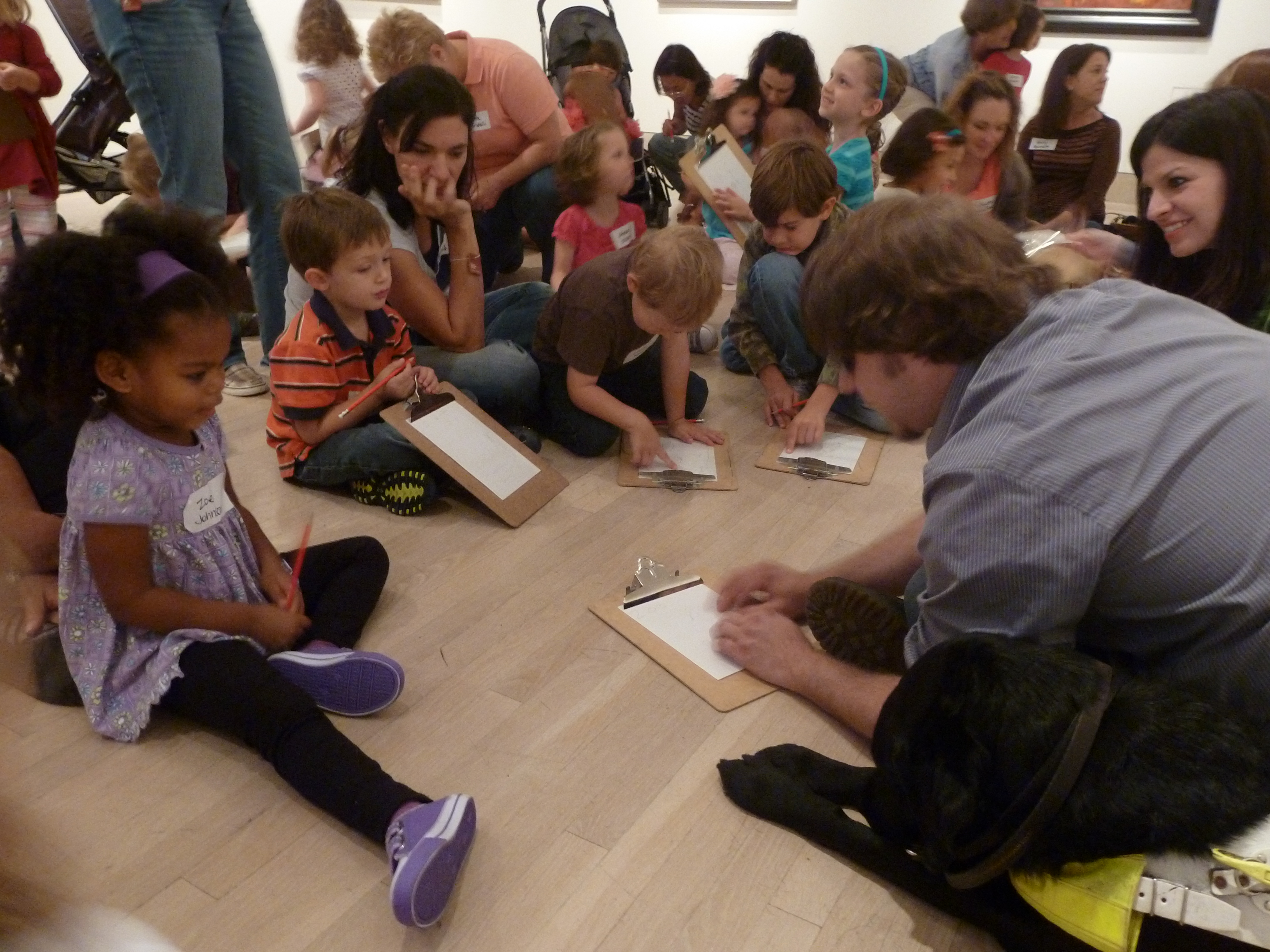
John leading a homeschool class in the galleries
Artist John Bramblitt joined several ABS programs this month to talk about his process as a blind painter. Our October First Tuesday was focused on the senses and the Museum’s youngest visitors had the chance to immerse themselves in a sensory experience in Arturo’s Nest, our space for children under the age of four. John led Studio Creations in early October to kick-off a month of ABS-themed weekend art-making. He also led this month’s Meaningful Moments for visitors with Alzheimer’s disease and he will close our month of experiences by teaching our homeschool class. In our Arturo’s Art and Me class for children aged 3-5, kids got to paint in the dark to experience sightless painting and our Arc participants had the chance to wear blindfolds to paint with their fingers!
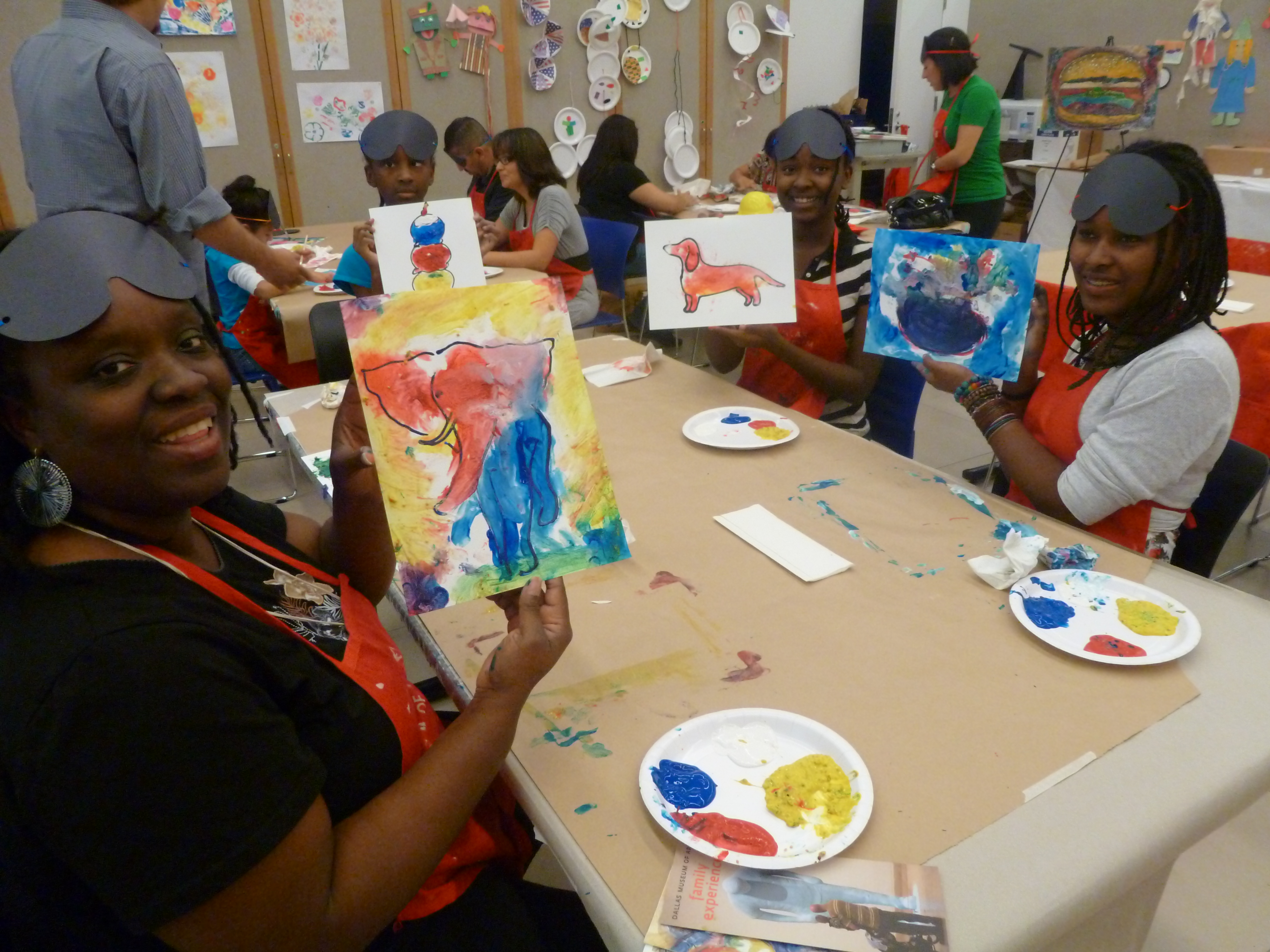
Visitors experience John’s Sightless Painting activity
In addition to these experiences, John led a public gallery talk for adults, during which he shared images of his artwork, talked about his process, and provided insights into his subject matter. And during Late Night last Friday, John teamed up with Stephen Lapthisophon in an artist’s lecture. Both artists have visual impairment, and both approach painting in a completely different way.
John’s process is very detailed and planned out, with various techniques that he employs for raised lines. John uses raised lines to sketch the base of his drawing first – some of the lines are raised for only a short period of time while others remain raised to allow John to feel the contours of his drawing for a longer amount of time. After he drafts his lines, John adds many, many layers of paint. For Stephen on the other hand, art-making is a social art and isn’t highly technical.
Both artists have varied creative inputs as well. Much of John’s artwork is representational and a reflection of an internalization of his sensory world, while Stephen’s artwork is more about the experience of his senses as he is creating (often with food and text) which could be a reflection of society and the associations of his materials. Each artist spoke a bit about his process and then each had the chance to sit down for a conversation together before taking questions from the audience. The artists had the chance to ask questions of one another and it was interesting to hear them contrast their processes and to get their takes on how other senses play a strong role in their own art. This program was an opportunity for visitors with visual impairment to meet and talk with John and Stephen. The lecture ended with a woman who has been blind for five years asking advice from the artists about her own art. Each artist gave her some ideas and encouragement before meeting with her after the lecture to continue the conversation.
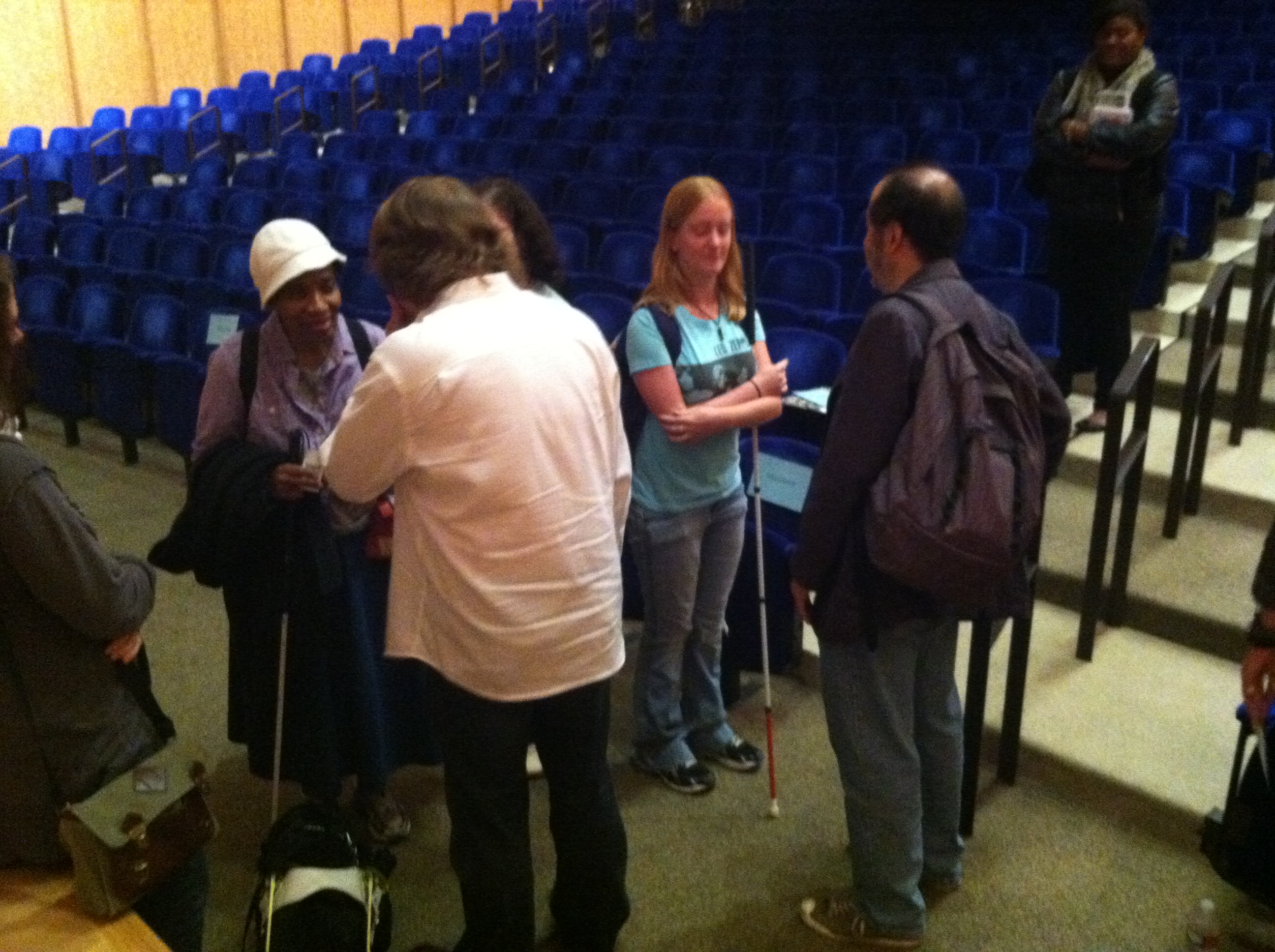
Visitors with vision impairment talking with John and Stephen after their Late Night artist lecture
The Access Programs offered by the DMA are essential components in creating welcoming, accessible environments, but there is still more to be done. What other types of resources can and should be made available to visitors? Let us know what you think and be sure to check back in the future as we delve deeper into this matter.
Danielle Schulz
Teaching Specialist
Amanda Blake
Head of Family, Access, and School Experiences
